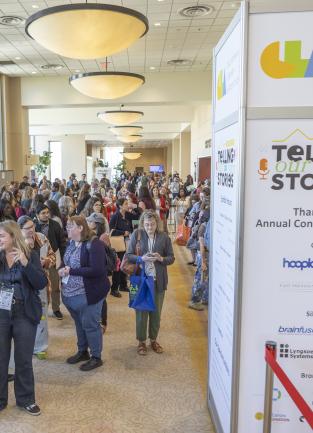A Brief Look at American Elections and Political Participation

Mon, 17/06/2024 - 05:00
On November 5th, citizens voting in the next presidential election will push their candidate of choice into the white house. Historically, the president of the United States has almost always come from one of the two major political parties: Democrat or Republican. In recent years, the rivalry between these parties has intensified greatly. Common political discourse includes slogans like “vote blue no matter who,” encouraging citizens to remain loyal to one party, regardless of who their candidate is. However, according to a 2023 report by the Pew Research Center, recent citizen satisfaction with the performance of both parties may be wavering.
Funnily enough, the historic rivalry between these two parties did not begin until the founding of the Republican party in 1854. Before that, other parties like the Whigs or the Anti-Masonic party were seen competing against each other for the presidency instead. The Democratic and Republican parties may reign supreme in terms of size and influence today, but it wasn’t always this way. Multiple political parties have always existed alongside the main ones, vying for the support of Americans across the country. The possibility of their victories has only dwindled, but remnants of these parties are still seen in almost every election year, pulling in a percentage of the overall votes in the general election.
General Election Qualifications
Anyone can say they are running for president, but there are regulations surrounding who can appear on state ballots. Aside from the classic constitutional rules like being a U.S. born citizen over the age of 35, there are few more things that a potential candidate must do by the time November rolls around. Unlike the constitutional rules, each state’s election code is different and has separate regulations. In California, for example, Election Code Section 5151 lists 4 ways that political parties can have a candidate run in the general election. In the case of a newly formed party looking to be on the ballot:
On or before the 135th day before a presidential general election, there is filed with the Secretary of State a petition signed by voters, equal in number to at least 10 percent of the entire vote of the state at the last preceding gubernatorial election, declaring that they represent a proposed party, the name of which shall be stated in the petition, which proposed party those voters desire to have participate in that presidential general election. This petition shall be circulated, signed, and verified, and the signatures of the voters on it shall be certified to and transmitted to the Secretary of State by the county elections officials substantially as provided for initiative petitions. Each page of the petition shall bear a caption in 18-point boldface type, which caption shall be the name of the proposed party followed by the words ‘Petition to participate in the presidential general election.’
This is important because general election ballots are the only way that candidates have the chance to attain electoral college votes. Kanye West famously announced his run for presidency back in 2016, but also failed to appear on most state ballots. Whether or not his campaign was a serious bid at presidency, the failure to appear on the ballot cemented the end of his campaign. In contrast, many other third parties and independents met this requisite and thus were able to go further during previous election years.
As of February 6, 2024, there are 6 qualifying political parties for the 2024 general election, with 8 currently attempting to qualify (Weber, 2024). Qualifying parties include the Green Party, Libertarian Party, and American Independent Party. Among the third-party candidates, Robert F. Kennedy’s attempt at the presidency has garnered the most media coverage. In fact, he may even be the first third-party candidate, in a long time, that we will see alongside the Democratic and Republican party candidates during debate season.
Has Any Third-party or Minor Party Candidate Won the Presidency?
Well…not really. And that’s one of the main reasons why many people don’t vote outside of the major two parties even if they aren’t completely happy with the choices they are presented with from the main parties. In 1912, Theodore Roosevelt ran under the Progressive Party for a third term and won 16.6% of the nation’s electoral votes (UC Santa Barbara, 2023). This was perhaps the largest vote ratio that any 3rd party or independent candidate pulled while competing in an election with Democrats and Republicans. In future years, the numbers dwindled to 2.4% for Robert LaFolette in 1924, 7.3% for Strom Thurmond in 1948, and 8.4% for George Wallace in 1968. Since then, no other third-party candidate has won any electoral votes. The two major parties have since solidified themselves as the only realistic choices in the eyes of many. Once on state ballots and able to pull votes, anyone outside of the Democrats and Republicans is largely seen as a spoiler candidate. Regardless, it’s important to remember that the Democratic and Republican parties are not the only ones that exist. Similarly, the act of voting is not the only way in which we can engage with the political system.
Political Participation
Whoever you want to vote for and whatever policy you want to support, know that you can. Though 3rd party candidates are historically unpopular, they shouldn’t be automatically discarded. American politics and legislation are interconnected. One informs the other, and each has a huge impact on the trajectory of the United States. That’s why it’s important to elect the right officials to enact the right legislative policies. As a resident of the nation, the most powerful way to have your voice heard is through participation in the political system. Whether voting, protesting, petitioning, or otherwise, knowing how to do so within the limits and requirements of legislation will make you a more effective participant. Just take a look at the encampments at the University of California, Riverside to show how powerful your voice can be in making change! Knowing your rights, your choices, and what your representatives stand for will help protect your voice and have it heard.
Many resources are openly available online, and even more are available through our library! In fact, this past Law Day, our library hosted a panel discussion about political participation. If doing a deeper dive into America’s legislation interests you, visit our library’s website or branch locations to access our databases and books to start researching!
References
Constitutional Requirements for Presidential Candidates (https://www.usa.gov/requirements-for-presidential-candidates)
Overview of the Presidential Election Process (https://www.usa.gov/presidential-election-process)
County clerk/Registrar of voters (CC/ROV) memorandum #24049. https://elections.cdn.sos.ca.gov/ccrov/2024/february/24049kd.pdf
Forbes. RFK Jr. inching toward qualifying for trump-biden debates- here’s what he still needs to do. https://www.forbes.com/sites/saradorn/2024/05/28/rfk-jr-inching-toward-qualifying-for-trump-biden-debates-heres-what-he-still-needs-to-do/?sh=536a5d3b5c88
Pew Research Center. Views of the parties and congress. https://www.pewresearch.org/politics/2023/12/14/views-of-the-parties-and-congress/
UC Santa Barbara. The american presidency project. https://www.presidency.ucsb.edu/statistics/elections/1912
PBS. What you need to know about 2024s third party candidates so far. https://www.pbs.org/newshour/show/what-you-need-to-know-about-2024s-third-party-candidates-so-far
BBC News. Kanye west election: How many votes did he get? https://www.bbc.com/news/election-us-2020-54849605
Inside UCR. Agreement to peacefully end encampment on campus. https://insideucr.ucr.edu/announcements/2024/05/03/agreement-peacefully-end-encampment-campus











